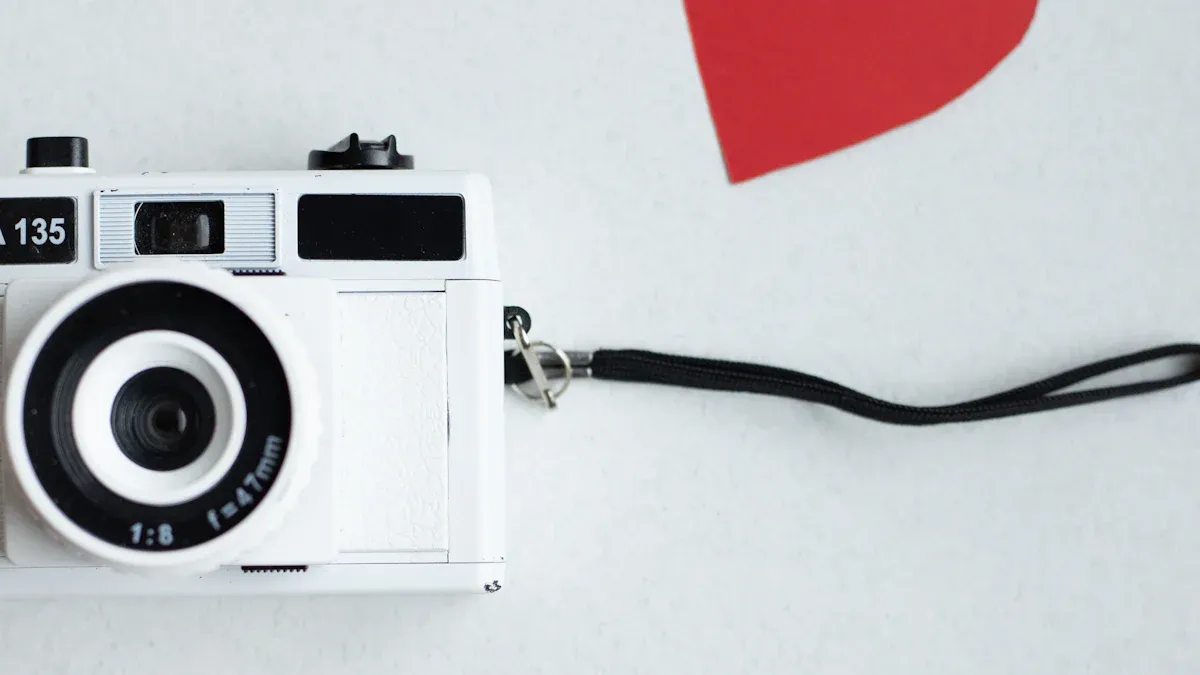Why Overcharging Your Flashlight Battery Can Shorten Its Life

Overcharging your helius flashlight battery can cause serious damage. When you leave a lithium-ion or rechargeable battery plugged in for too long, it generates heat. This heat weakens the internal components and leads to chemical degradation. Over time, the battery loses its ability to hold a charge effectively. To avoid overcharging, you must monitor charging times and use the right tools. Proper care ensures your flashlight performs reliably and lasts longer.
Key Takeaways
Charging your flashlight battery too long makes heat, harming parts inside and shortening its life.
Use chargers with overcharge protection to stop overheating and help the battery last longer.
Watch charging times carefully; unplug the battery when fully charged to stop it from wearing out.
Keep batteries in a cool, dry spot and at 40% to 60% charge for best use.
Pick good-quality batteries made for flashlights to stay safe and work well.
How Flashlight Batteries Work

Charging and Discharging Basics
Understanding how batteries work helps you take better care of them. Lithium-ion batteries, for example, operate through a process of ion movement. During charging, lithium ions travel from the cathode to the anode through an electrolyte. This happens in two phases. First, the constant current phase keeps the current steady while the voltage rises. Then, the constant voltage phase maintains the voltage as the current decreases until the battery is fully charged. When discharging, the ions move back to the cathode, releasing energy that powers your flashlight. This cycle of ion movement and electron flow is what makes lithium-ion batteries so efficient.
For rechargeable batteries like the 18650 rechargeable lithium battery, proper charging methods are essential. Overcharging or using the wrong charger can disrupt this delicate process. USB charging is a convenient option, but you should always monitor the process to avoid damaging the battery.
Types of Flashlight Batteries
Flashlights use different types of batteries, each with unique characteristics. Alkaline batteries are common and inexpensive, but they are not rechargeable. They work well for occasional use but lack the longevity of rechargeable options. Lithium-ion batteries, on the other hand, are rechargeable and offer high energy density, making them ideal for high-performance flashlights. NiMH batteries are another rechargeable option. They are more environmentally friendly than alkaline batteries and perform well in devices with moderate power needs.
Choosing the right battery depends on your flashlight and how often you use it. For frequent use, rechargeable options like lithium-ion or NiMH batteries are better. They save money in the long run and reduce waste compared to disposable alkaline batteries.
Charge Cycles and Battery Longevity
A battery's lifespan depends on its charge cycles. A charge cycle is one complete charge and discharge process. Lithium-ion batteries typically last for 300 to 500 cycles, while NiMH batteries can handle up to 1,000 cycles. Alkaline batteries, being non-rechargeable, do not have charge cycles and must be replaced after use.
To maximize battery longevity, you should follow proper charging methods. Avoid overcharging and use chargers designed for your battery type. USB charging is convenient but requires attention to prevent overheating. Proper care ensures your flashlight battery lasts longer and performs reliably.
The Science Behind Overcharging
Heat Generation and Its Impact
Overcharging generates heat inside the battery. When you leave a lithium-ion battery plugged in for too long, the excess energy turns into heat. This heat damages the battery's internal structure. It can cause the electrolyte to break down, which reduces the battery's ability to hold a charge. High temperatures also increase the risk of swelling or leakage. You may notice your flashlight battery getting warm during charging. This is normal to some extent, but excessive heat signals a problem. To prevent this, always use a charger designed for your battery type.
Chemical Degradation in Lithium-Ion Batteries
Lithium-ion batteries rely on chemical reactions to store and release energy. Overcharging disrupts these reactions. When you overcharge, the lithium ions become unstable. This instability leads to the formation of unwanted chemical compounds inside the battery. These compounds reduce the battery's capacity over time. You might find that your flashlight doesn't last as long on a single charge. To avoid chemical degradation, monitor charging times and unplug the battery once it’s fully charged.
Stress on Internal Components
Overcharging puts stress on the internal components of your battery. The anode and cathode, which are critical for energy transfer, wear out faster under constant stress. This reduces the number of charge cycles your battery can handle. You may notice your flashlight battery losing efficiency after repeated overcharging. Using a smart charger can help regulate the charging process and protect these components. Proper care ensures your battery lasts longer and performs reliably.
Consequences of Overcharging

Reduced Capacity in 18650 Rechargeable Lithium Batteries
Overcharging your 18650 rechargeable lithium battery can significantly reduce its capacity. When you keep the battery fully charged for extended periods, it accelerates internal chemical reactions. These reactions degrade the battery's ability to store energy. Lithium-ion batteries perform best when charged between 20% and 80%. Ignoring battery health by leaving flashlight plugged in for too long can cause the battery to lose its efficiency. Over time, you may notice your flashlight running out of power much faster than before. To preserve capacity, avoid overcharging and unplug the charger once the battery reaches full charge.
Shortened Lifespan of Flashlight Batteries
Overcharging doesn’t just affect capacity; it also shortens the overall lifespan of your flashlight battery. Lithium-ion batteries are designed to handle a limited number of charge cycles. Overcharging stresses the internal components, such as the anode and cathode, reducing the number of cycles the battery can complete. Batteries stored in high temperatures or kept fully charged degrade even faster. For example, laptops left plugged in constantly often require battery replacements sooner. By monitoring charging times and using smart chargers, you can extend the longevity of your flashlight battery.
Safety Risks of Overcharging
Overcharging poses serious safety risks. Excess heat generation can cause the battery to overheat, leading to swelling or leakage. In extreme cases, the battery may even explode. Here are some common safety risks associated with overcharging:
Swelling of the battery
Leakage of battery contents
Potential for explosions in extreme cases
To prevent these risks, use chargers with overcharge protection circuits. These circuits disconnect the battery from the power source once it’s fully charged, preventing overheating and prolonging the battery’s lifespan. Always prioritize safety when charging your flashlight battery.
Tips to Avoid Overcharging
Use Smart Chargers for Flashlight Batteries
Smart chargers are one of the best tools to prevent overcharging. These chargers include advanced features that protect your flashlight battery during charging. For example:
They use overcharge protection circuits to disconnect the battery from the power source once it reaches its maximum voltage.
Voltage regulators monitor the battery's voltage levels and stop charging if the voltage exceeds safe limits.
By regulating current flow, they prevent overheating and extend the battery's lifespan.
Using the right charger designed for your rechargeable flashlight battery ensures safe and efficient charging. Avoid generic chargers, as they often lack these safeguards. A smart charger not only protects your battery but also helps you avoid common mistakes like charging too frequently or leaving the battery plugged in for too long.
Monitor Charging Times
Monitoring charging times is another essential practice to avoid overcharging. Different batteries have specific charging requirements. For instance:
Most lithium-ion batteries charge from 0% to 80% in 1-2 hours, while the last 20% may take an additional 1-2 hours.
High-capacity or fast-charging batteries can fully charge in as little as 30-45 minutes.
Following the manufacturer's guidelines for charging times is one of the best practices for charging your flashlight battery. Overcharging often occurs when you leave the battery connected to the charger for extended periods. Set a timer or check the battery periodically to ensure you unplug it once fully charged. This simple habit can prevent overcharging and prolong the battery's life.
Choose High-Quality Batteries
High-quality batteries are less prone to overcharging-related issues. When selecting a flashlight battery, look for these features:
Integrated protection circuits that regulate charging and discharging processes.
Overcharge protection circuits that disconnect the battery from the power source once fully charged.
Voltage regulators that monitor voltage levels and stop charging if limits are exceeded.
Investing in a reliable rechargeable battery reduces the risk of mistakes like overcharging or overheating. High-quality batteries also perform better and last longer, making them a cost-effective choice in the long run. Always choose batteries from reputable brands and avoid cheap alternatives that lack essential safety features.
Store Batteries Properly
Proper storage plays a key role in maintaining your flashlight battery's health. When you store batteries correctly, you reduce the risk of overcharging, overheating, and chemical degradation. Follow these tips to ensure your batteries remain in good condition:
Keep batteries in a cool, dry place: High temperatures can accelerate chemical reactions inside the battery, leading to faster degradation. Avoid storing batteries near heat sources like radiators or direct sunlight. A temperature range of 50°F to 77°F is ideal for most rechargeable batteries.
Avoid fully charged or fully depleted storage: Lithium-ion batteries perform best when stored at around 40% to 60% charge. Storing a battery at full charge for long periods can increase stress on its internal components. On the other hand, a completely drained battery may lose its ability to recharge.
Use protective cases: Loose batteries can short-circuit if their terminals come into contact with metal objects. Always store them in a protective case or a battery organizer to prevent accidental damage.
Tip: Label your batteries with the date of purchase. This helps you track their age and replace them before they lose efficiency.
Additionally, avoid mixing old and new batteries in storage. Older batteries may leak or corrode, potentially damaging newer ones. If you plan to store batteries for an extended period, check them periodically for signs of swelling, leakage, or corrosion. Proper storage not only extends battery life but also ensures your flashlight remains ready when you need it most.
By adopting these practices, you can protect your flashlight batteries and maximize their performance over time.
Overcharging your flashlight battery can lead to reduced capacity, a shorter lifespan, and potential safety risks. To maximize performance and longevity, follow these strategies:
Choose a High-Quality Flashlight Battery: Select batteries specifically designed for flashlights to ensure durability and efficiency.
Implement Proper Charging Techniques: Use a reliable charger and follow the manufacturer's instructions to prevent overcharging.
Correct Storage Practices: Store batteries in a cool, dry place to avoid damage and maintain their effectiveness.
By adopting these practices, you can keep your flashlight ready for use and extend the life of its battery.
FAQ
What happens if you leave your flashlight battery charging overnight?
Leaving your flashlight battery charging overnight can lead to overcharging. This generates excess heat, which damages internal components and reduces battery life. Over time, the battery may lose its capacity to hold a charge effectively. Always unplug the charger once the battery is fully charged.
Can overcharging cause a flashlight battery to explode?
Yes, overcharging can cause a flashlight battery to overheat, which increases the risk of swelling or even explosions in extreme cases. Using a smart charger with overcharge protection significantly reduces this risk and ensures safe charging.
How do you know when your flashlight battery is fully charged?
Most smart chargers have an indicator light that turns green or stops blinking when the battery is fully charged. If your charger lacks this feature, refer to the manufacturer's guidelines for estimated charging times and monitor the process closely.
Is it safe to use a generic charger for your flashlight battery?
Using a generic charger can be risky. Many generic chargers lack overcharge protection, which increases the chances of overheating and battery damage. Always use a charger designed specifically for your flashlight battery to ensure safety and optimal performance.
How can you extend the life of your flashlight battery?
To extend your flashlight battery's life, avoid overcharging, store it in a cool, dry place, and use a smart charger. Additionally, keep the battery charged between 20% and 80% for optimal performance and longevity.
See Also
Maximize Your Flashlight's Battery Life With These Tips
Prolong Your Flashlight's Lifespan For Extended Usage
Learn How Rechargeable Flashlights Discharge Over Time
